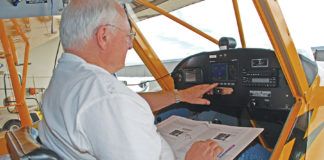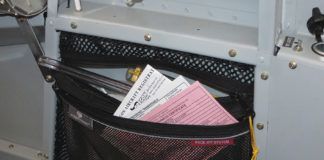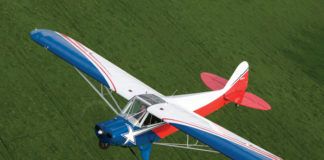One of the big reasons that people build their own airplane is the flexibility afforded by the FAA when it comes to maintenance and inspections. If you are the builder of an experimental aircraft, you can be issued the repairman’s certificate that allows you to sign off the annual condition inspection—thereby making you the builder, maintainer, and inspector, all rolled into one. This can save you a great deal of money, not having to hire an A&P to do your inspection, but as they say “with great power comes great responsibility.” (At least those who read comic books say that…I hear.)
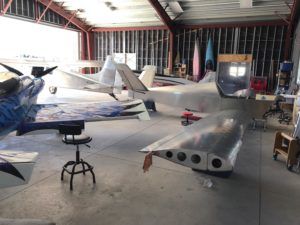
The thing is, while you can find many books and magazine articles on how to build and how to maintain an aircraft, you find precious few sources on how to actually perform an inspection. What this generally means is that, once a year, an owner parks the airplane, removes all of the access panels, and performs a checklist of maintenance items, declaring that when the oil has been changed, the wheel bearings greased, and the compression checked, the airplane is “in a condition for safe operation.” Yeah, I’m oversimplifying here, but the idea is the same—most people tend to conflate “maintaining” with “inspecting”—and they are, in truth, two different things.
Why does this make a difference? Well firstly, I am often concerned when you find someone talking about their brakes being close to worn out, but “they’ll get it at the next inspection.” The same thing happens with a number of maintenance items. Before you know it, pilots are flying airplanes that really have a lot of work deferred that should be done before they fly, if for no other reason than deferring maintenance can lead to more costly problems—like wearing through those brake pads and eating up metal pieces that cost a lot.
The fact is, it is not a bad idea to separate maintenance and inspection entirely in your own mind. Sure, it is convenient to fully open up the airplane and perform those maintenance items all at once, when you’ve already scheduled the airplane out of service in your mind and you can get to things easily. But I’d suggest that when you do this, you first put on your maintenance hat and do all of those things listed that fall in that category—greasing, lubing, checking for wear, checking clearances, rigging, etc.—and then, after all of the maintenance is done, switch hats and go into inspector mode. Again, this is an oversimplification because, of course, you are going to be looking at things while you’re in the difficult places lubricating controls and calling that your inspection. But the point is still valid: Separate the maintenance and the inspection into two distinct activities.
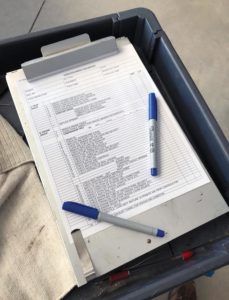
Why is this important? Well, first, there’s that bit about deferring maintenance “until the inspection.” Wrong, wrong, wrong. You do maintenance when it is time to do maintenance, based on flight time, calendar time, cycles or wear. Maintain when needed, record it in the book, and when it comes time to do an inspection, review what has been done to see if it needs to be repeated.
When it comes time to do an inspection, the guidance we are given by the FAA is to be found in Appendix D of Part 43—the thing you reference when you sign the logbook declaring that the airplane is in a condition for safe operation. It’s easy to find, and I bet that most builders have never actually read it. Go ahead and Google it right now—type “Appendix D to Part 43” into your browser—it will pop up. Got it? Good—it’s not very long, is it? As you go through the few paragraphs, you’ll note that there is nothing there mandating an oil change, brake pad replacement, or anything else that comes under the heading of “maintenance.” It says “inspect the condition”…“look for excessive leaks”…“inspect for deterioration or breakage.” Nope, nothing there about doing anything other than looking and identifying.
The fact that Appendix D is all about inspecting and not maintaining should tell you something about the difference between the two, and this is why I suggest that people see them as two separate functions. I change the oil when it comes due—and if I have done that five hours before I do the inspection, I don’t change it again. Appendix D doesn’t say I have to, and the maintenance manual doesn’t say I have to. Same thing is true with all of the serviceable components. I have a number of aircraft in my fleet, which means that most of them don’t fly very many hours in a year. My RV-8 flew a total of 30 hours last year, and had about that many landings—do I really need to repack the wheel bearings because a year is up? Well not according to Appendix D, which is our guide for inspecting. Brake linings last me hundreds of hours on my taildraggers (I don’t fly most of them into very short strips requiring lots of braking.) So they get changed when the minimum thickness specified by the Cleveland manual is reached.
The important thing to remember when exercising your inspection authority is to look for guidance in both Appendix D and whatever inspection criteria might be provided by your kit manufacturer or aircraft designer. For example, an RV-8 must have the torque checked on the landing gear attach bolts annually. Now, does that really mean I need to check them if the airplane has been in storage and not flying? Well…check with Van’s for their opinion. You’ll note in your perusal of Appendix D that it repeats “an annual or 100 hour inspection” frequently, meaning that the inspection is the same for either. Airplanes that are used for commercial purposes must be inspected every 100 hours. So if you’ve only put 30 hours on since the last inspection it probably doesn’t need to be any more stringent, unless you’ve been doing really nasty things in those 30 hours. And, of course, if really has been stored for a year, you’ve got some nests and cobwebs to look for…
When you move from the position of “builder” into the realm of “maintainer” and the simultaneous role of “inspector,” it is important to analyze just exactly what you need to be doing to keep your aircraft in a “condition for safe operation.” Study what others do, but never forget that the FAA has laid out guidance for us that it expects us to follow. And never forget that maintenance is due and required when it is due and required—independent of that inspection you have scheduled for a few months from now.










